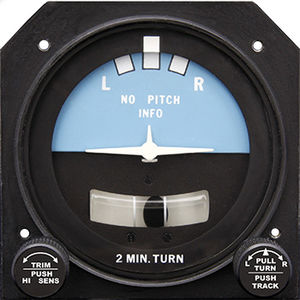
- Components - Spare Parts
- Flight and Cockpit Instrument
- Aircraft horizontal situation indicator
- Century Flight Systems lnc.

- Products
- Catalogs
- News & Trends
- Exhibitions
Analog horizontal situation indicator for aircraftwith electric gyroscope
Add to favorites
Compare this product
Characteristics
- Display
- analog
- Applications
- for aircraft
- Other characteristics
- with electric gyroscope
Description
An HSI, or Horizontal Situation Indicator, is a combination of two familiar cockpit instruments: the directional gyro with a heading bug and a VOR/ILS indicator.
What does an HSI do for the pilot?
Combining the directional gyro and the NAV indicator into one instrument reduces pilot workload by providing heading, course reference, course deviation, and glideslope information all in one visual aid. In addition, an HSI:
Makes it easier to visualize the aircraft's position with reference to the selected course or holding patterns. The "split needle" presentation, made up of the course and reciprocal pointers and the VOR/LOC deviation indicators, clearly shows both selected course and course deviation.
Gives standard sensing and course deviation indication on back course ILS approaches, provided the front course heading is set under the head of the course pointer and the plane is flown toward the course deviation indicator.
Provides convenient 45-degree tic marks to help visualize procedure turns and reciprocals so that pilots need not memorize outbound/inbound headings or add/subtract 45 degrees for intercepts or offsets.
Serves as a heading bug for autopilot coupling or as a heading reminder in aircraft not equipped with autopilots.
Compass System Working Parts
Heading Select Knob: Rotating this knob sets the heading bug and also aligns a heading transformer for coupled autopilot use to the selected heading. Pushing this knob in cages the gyro.
Heading Flag: This red warning flag indicates loss of vacuum and/or electrical power to the gyro. Heading information is then unusable, but all course information (comparable to a standard VOR/ILS) remains valid.
Related Searches
- Artificial horizon
- Electrically-powered artificial horizon
- Aircraft directional gyro
- Electronic attitude indicator
- Directional gyro
- Illuminated attitude indicator
- 3-inch artificial horizon
- Aircraft turn indicator
- Turn indicator
- Electric turn indicator
- Aircraft horizontal situation indicator
- Horizontal situation indicator
- Illuminated turn indicator
*Prices are pre-tax. They exclude delivery charges and customs duties and do not include additional charges for installation or activation options. Prices are indicative only and may vary by country, with changes to the cost of raw materials and exchange rates.





